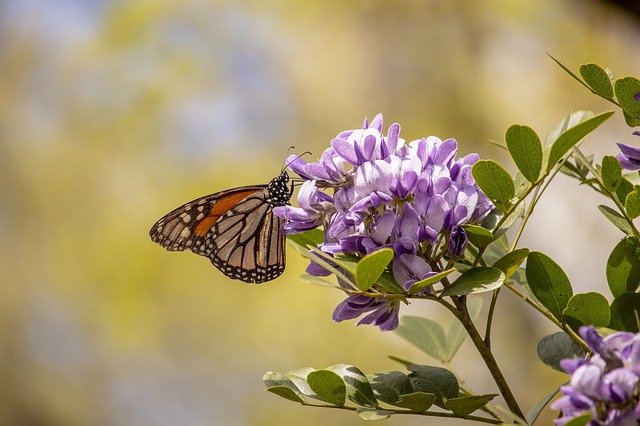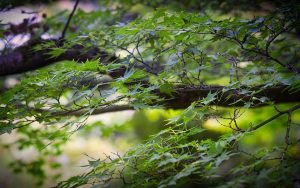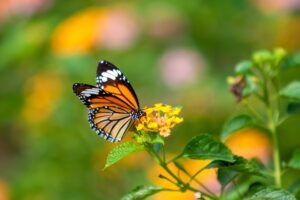
As FWBG | BRIT celebrates National Native Plant Month this April, we invite you to bring more Texas natives into your garden.
“Gardening with native plants is an easy way to support local wildlife, cut water consumption and reduce your reliance on pesticides,” says Sr. Horticulturist Steve Huddleston. “And I think you’ll find the results can be beautiful.”
Native plants offer several advantages. They adapted over time to the soils, rainfall patterns and wildlife of our area. Consequently, they will tolerate conditions that other plants reject, including heavy clay soils and periods of drought interspersed with occasional heavy rain. They also provide provide food and shelter to local bees, lizards, butterflies, birds and more.
As a result, native plants need less water and require less maintenance when compared to introduced species. They help protect against erosion with long roots that trap and hold soil in place; this, in turn, improves water quality. And native plants preserve our natural heritage.
To get started, look up some of the many resources on the native plants of Texas. One of the most comprehensive sources is the Texas SmartScape Plant Database, sponsored by the North Central Texas Council of Government’s Regional Stormwater Management Program, local governments and regional water districts. The database allows you to limit your search for plants to native species and then to drill down into specifics such as light requirements, use in the landscape, ornamental color and size.
Another excellent resource is the Native Plants of North America database maintained by the Lady Bird Johnson Wildflower Center. This database also allows you to search for plants by their characteristics and growing habits.
Another good starting point are Huddleston’s four favorite native plants:
Lacey Oak
This small to medium-sized, deciduous tree (Quercus laceyi) hails from the Hill County and reaches a perfect size (35’ tall by 30’ wide) for suburban lots. Branches are erect and spreading, and the tree assumes an overall oval shape. Lacey oak’s most appealing feature is its foliage. The leaves emerge a peach color in spring, turn a beautiful blue-green in summer, and turn peach again in the fall. Lacey oak tolerates alkaline soil, high heat, and drought and makes a striking addition to the landscape.
Red Yucca
Red yucca (Hesperaloe parviflora) is the best plant you’ll ever find for use in full sun, reflected heat situations such as along driveways and sidewalks, around swimming pools and in parking lots. This native of west Texas forms a mound of evergreen, stiff and fleshy leaves that are narrow, rolled up on the sides, adorned with white fibrous threads on the margins and that gracefully arch downward. The entire mound of foliage reaches a height and spread of 3’ or so. The form of the plant alone and the character of the leaves create a sculptural quality that can be admired throughout the year whether the plant is blooming or not. Striking flowering stalks rise 4’-6’ above the foliage from spring through fall and bear 1”-long, bell-shaped, coral-red flowers that appear in clusters up and down the stalks and that attract hummingbirds. Hardy to 12° F (USDA hardiness zone 7), red yucca tolerates a wide range of soils as long as they are well-drained. Once established, red yucca is extremely drought tolerant.

Autumn Sage
Autumn sage (Salvia greggii) forms an upright, rounded shrub about 2-2 ½ feet tall and wide. The crown and older branches develop a woody, slightly gnarled appearance with bark that peels off in long strips. In USDA Zones 7-9, where it is winter hardy, Salvia greggii is usually evergreen and therefore an attractive shrub in the winter landscape. Flowers appear on spikes all over this shrub April through October, although flowering is heaviest in the cooler weather of spring and fall. These flowers are a magnet for hummingbirds butterflies. Flowers come in red, white, pink, coral, pale yellow, fuchsia, burgundy and purple. Autumn sage grows best in full sun and requires well-drained soil. Once established, it is very drought tolerant. The only maintenance required is pruning twice a year. Cut it back to 6-8” in late February to remove old, woody growth, then cut back again by one-third in late August to induce strong fall bloom. If you don’t prune these two times, the plant will become woody and assume a sprawling shape.
Turk’s Cap
This is a must-have plant for shade! Turk’s cap (Malvaviscus arboreous var. drummondii) is a deciduous perennial that grows 2-4 feet tall and about 2-3 feet wide. It gets its common name from its unique flower, which is a whorl of bright red petals that resemble a fez. Cultivars offer variety in the size and color of the flowers: ‘Big Momma’ has red flowers about a third larger than the species’ flowers, ‘Pam Puryear’ has peach/pink-colored flowers, a white-flowering selection of Turk’s cap grows ivory flowers. Turk’s cap blooms from late spring until frost, and the flowers attract hummingbirds and butterflies. Plant Turk’s cap about 2-3 feet apart in dappled shade for best appearance. It grows in sand, loam, clay or limestone soils, as long as they are well-drained. Once established, Turk’s cap is quite drought tolerant. Cut stems back nearly to the ground after top growth freezes in the winter, and be patient for leaves to emerge the following spring.
Rusty Blackhaw Viburnum
This native, ornamental tree (Viburnum rufidulum) gives a command performance each season of the year, although its spring performance steals the show. It typically forms a small tree or large shrub 12’-20’ tall, although it can grow taller. Rusty blackhaw viburnum leafs out in the spring with bright green, shiny leaves. By summer, the leaves turn a dark green color and maintain their lustrous appearance. Leaves drop in the late fall/early winter, but not before turning brilliant hues of red, mauve, and orange and creating quite a statement in the fall landscape. April is when rusty blackhaw viburnum puts on its best show. Large, showy, four-inch-wide clusters of small white flowers adorn the tree, making it look as if it is covered with a myriad of small bridal bouquets. Rusty blackhaw viburnum grows well in full sun to dappled shade in a range of soils, including sand, loam, clay, and limestone – as long as the soil is well drained. Once established, it has low water requirements and tolerates dry soil quite well. It demonstrates high heat tolerance, too. Because rusty blackhaw viburnum grows well in dappled shade, it makes an excellent understory tree beneath the canopy of larger trees such as oaks and cedar elms.
As you plan additions to your garden this spring, consider native plants for a beautiful, water-smart, truly Texan garden.







